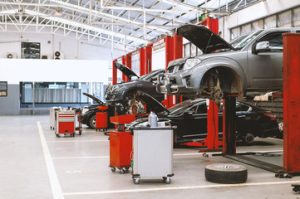The little things, like oil changes, brake inspections, and tire rotations, keep your car running smoothly and safely. This type of general auto repair is important to prevent costly breakdowns or safety lapses on the road.
It also improves resale value and helps you avoid unexpected expenses by identifying potential problems before they become major issues.

Check Engine Light
The modern automobile is an incredible feat of engineering, and it relies on hundreds of individual sensors and components to perform the many tasks necessary to get you from point A to point B. As a result, your vehicle is constantly on the lookout for potential problems, and one of the ways it lets you know there may be an issue is by turning on the Check Engine Light (CEL).
If your CEL turns on, you should make it a priority to have your car checked out as soon as possible. This light can indicate anything from a relatively minor problem, such as a loose gas cap (allowing fuel vapor to escape into the atmosphere), to something much more serious, like internal engine or exhaust system issues.
Depending on what is causing the Check Engine Light to illuminate, you may be able to drive your vehicle for short distances while the issue is being investigated. However, the sooner you have your vehicle inspected and repaired by a certified mechanic, the less likely it is that additional damage will occur.
Oil Change
While it may seem like a minor hassle, an oil change is a crucial step in preventative maintenance. You probably already know that your car’s engine oil lubricates its moving parts, reduces friction and heat, and helps regulate your vehicle’s temperature. However, many drivers have questions about when to schedule an oil change and what kind of oil to use (the correct type for your specific car, of course).
The best way to find out if it’s time for an oil change is to consult your owner’s manual. You’ll also want to check the oil dipstick periodically to see how much is left. The oil should be clear brown to black; if it’s milky, it needs to be changed.
During an oil change, technicians will drain and replace your old engine oil with fresh, clean oil. They will also install a new air filter, which helps to keep dirt and other unwanted particles from contaminating the engine. They’ll then perform a multi-point inspection to ensure everything is in good working order. If they need to, they’ll add your power steering fluid and antifreeze/coolant.
Tires
A tire’s tread pattern, construction materials, and other features impact its performance capabilities, fuel efficiency, safety ratings, and more. Whether you’re a spirited driver who loves tackling sharp curves or a commuter who spends long hours on the highway, your driving habits play a big role in the type of tires that are best for your vehicle.
Like a birth certificate, a tire has documentation that pinpoints when and where it was made. Look for the giant Department of Transportation (DOT) stamping on your tires, which is followed by a sequence of letters that corresponds to its manufacturing plant.
A modern tire contains a complex blend of natural and synthetic rubbers and other construction materials. It all starts with latex sap harvested from rubber trees. This raw material is then coagulated, washed, and pressed into bales. Once all the parts and pieces are assembled, they’re run through a curing machine that functions something like a waffle iron to mold in all the markings and traction patterns. This process is known as vulcanizing. The final product is then inspected, tested, and quality-approved.
Brakes
The brakes are the system that allows drivers to come to a stop. It’s a vital safety feature that requires maintenance to keep it functioning correctly.
Drivers can sometimes notice the need for a brake replacement due to visual signs, like the pads becoming thin or the rotors developing damage or warping. However, other issues can be more difficult to detect.
Low or dirty brake fluid can also reduce braking efficiency and accelerate wear on the rotors and pads. Having your brake fluid checked and replaced at the recommended intervals can help prevent these problems.
Brakes are one of the few car components that require expert knowledge to inspect and repair. Attempting to replace the brakes or rotors yourself could result in expensive damage or an unsafe driving situation.
Suspension
A car’s suspension is a lattice of shock-absorbing components that keep your ride smooth. It allows the tires to make good contact with the road while cushioning your cabin from the jarring impacts of bumps and dips in the highway.
The suspension is also responsible for handling all forces that are exerted on the wheels and road surface. It must balance these two needs, which are usually at odds with each other. For example, a race car with stiff springs will feel great on the track but not so good when carrying passengers or cargo.
Most conventional suspensions consist of passive springs that are controlled by dampers (or shock absorbers) to control the spring motions up and down. Modern suspensions may use active systems that are controlled by electronics to control the movement of the tires and frame.
In chemistry, a suspension is a heterogeneous mixture that contains solid particles larger than those found in a colloid, which are easily separated. Suspensions can be affixed to liquid or air, and are distinguished from solutions and gels because the solid particles don’t dissolve in the fluid.